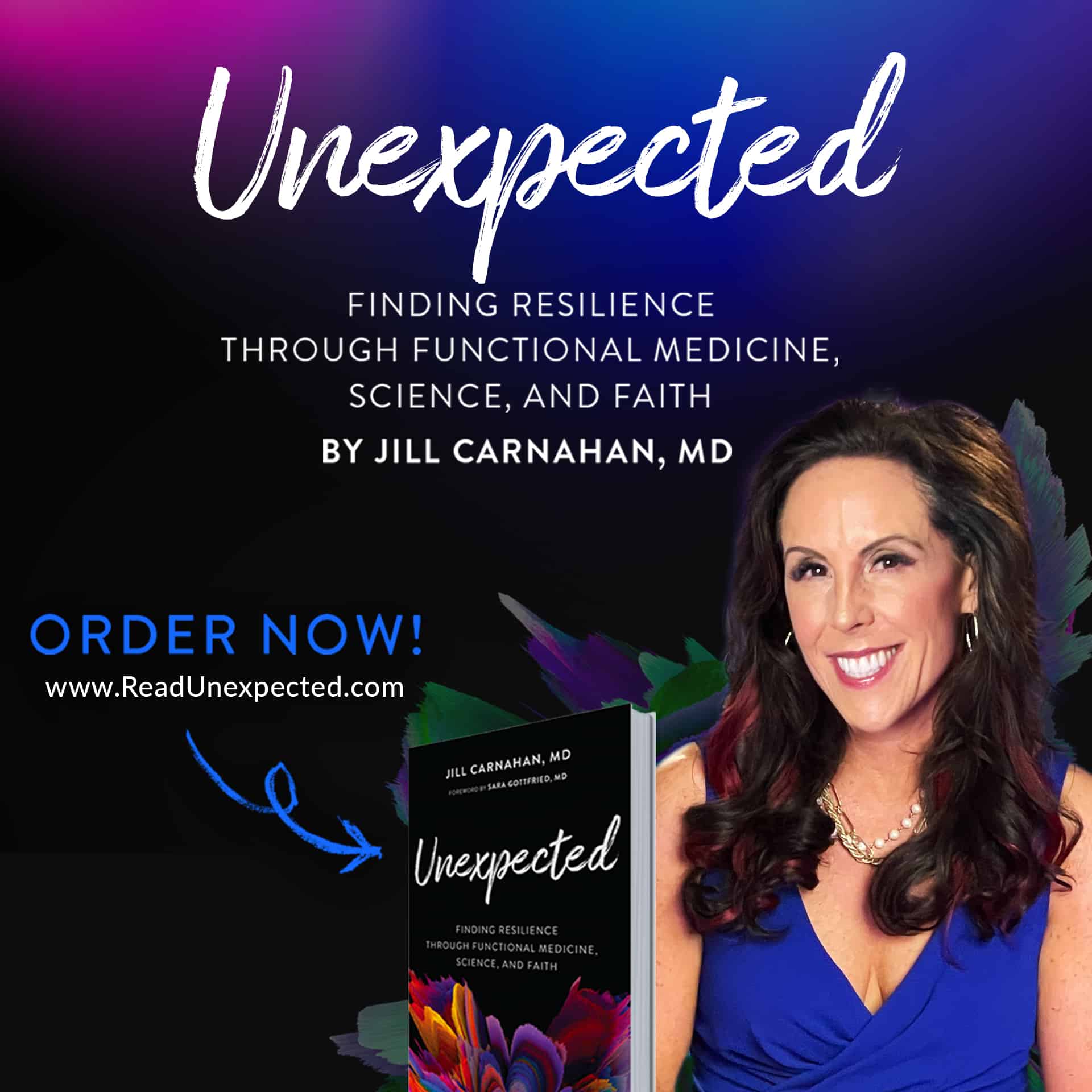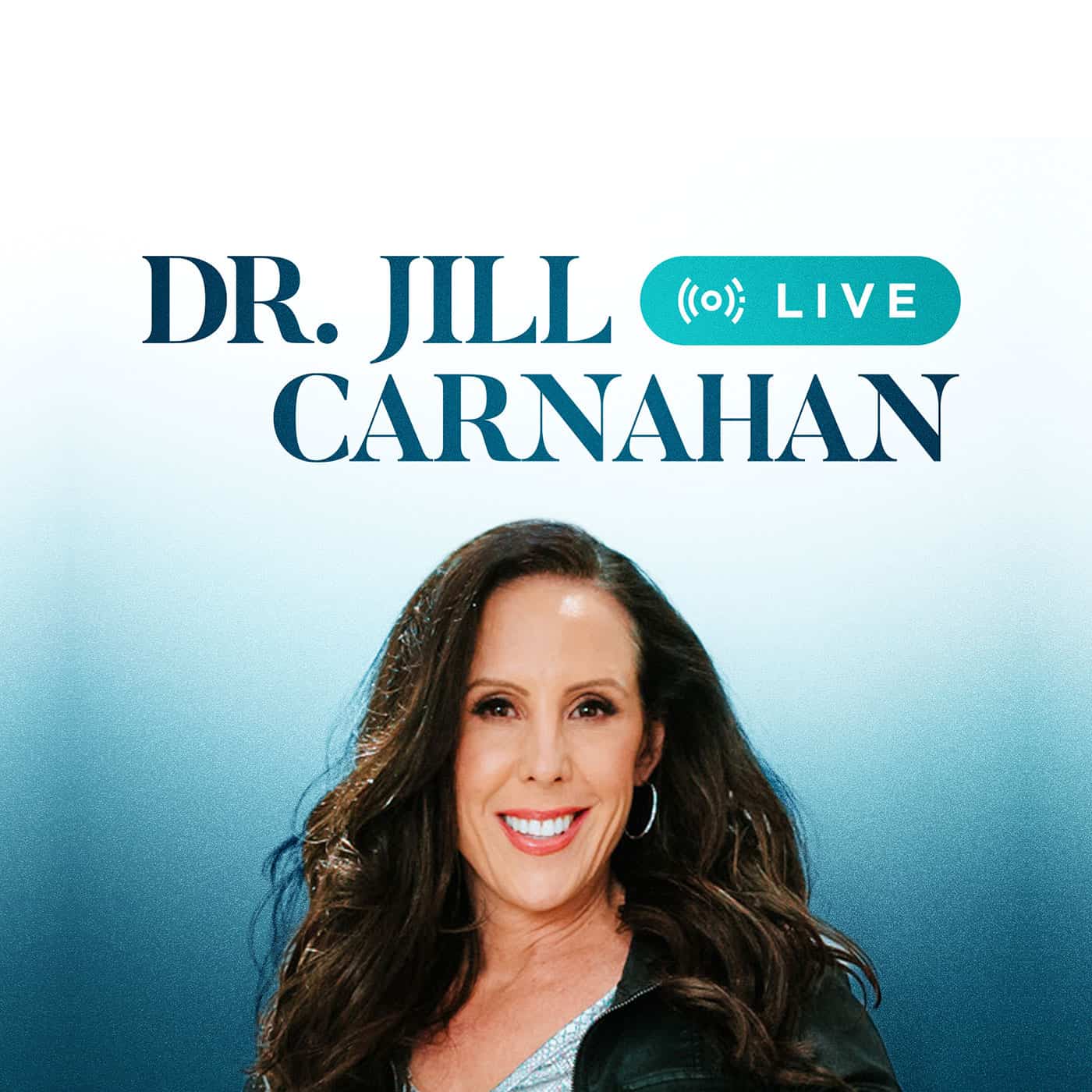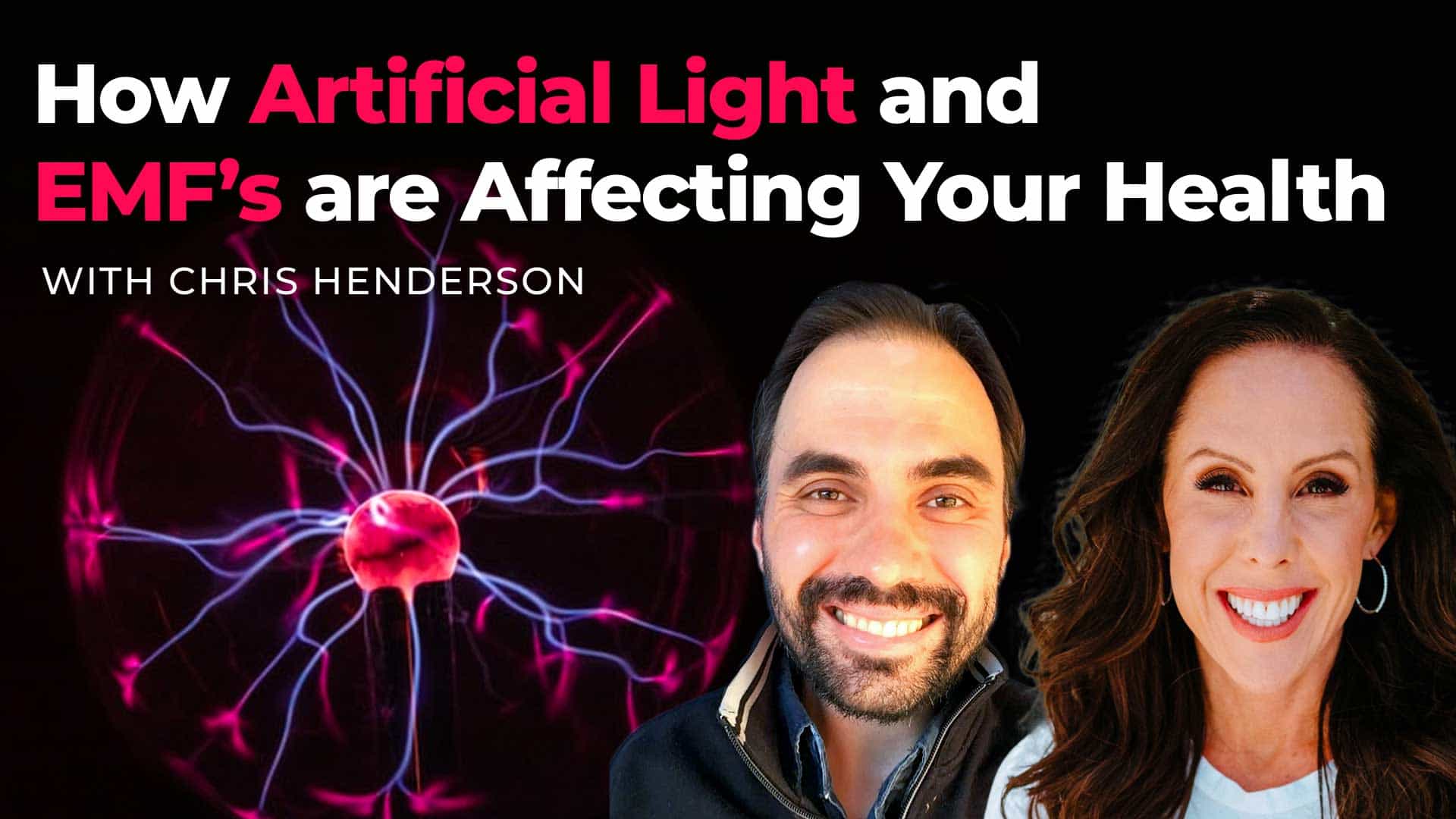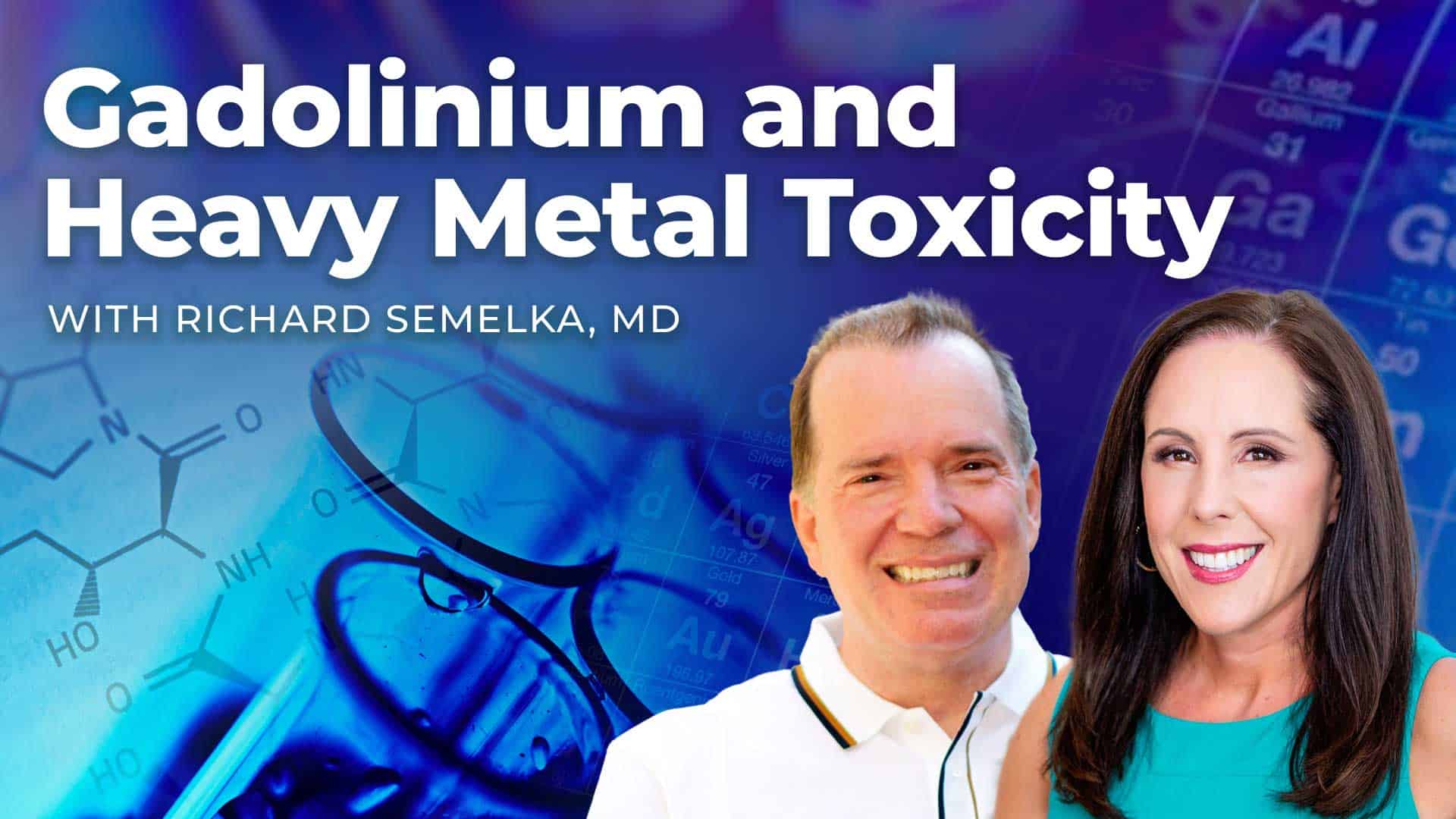Dr. Jill Carnahan recently interviewed Dr. Marty Ross on his new book, Hacking Lyme Disease: An Action Guide To Wellness. In this enlightening conversation, the two medical professionals delved into the causes, symptoms, and treatments of Lyme disease, a condition that affects millions of people worldwide.
Key Points
- How to get the best testing to find out if you have Lyme Disease
- What are the core strategies that will set you up for successful treatment of Lyme Disease
- How to know if you have symptoms of Lyme Disease, Bartonella or Babesia
The Guest – Dr. Marty Ross
Marty Ross, MD – https://www.treatlyme.net/
The Book Hacking Lyme – https://www.treatlyme.net/books
Dr. Marty Ross is the creative force behind Treat Lyme by Marty Ross MD, Marty Ross MD Supplements, and the recently published book Hacking Lyme Disease: An Action Guide to Wellness. He believes strongly that given the right information, people with Lyme and tick-borne illnesses can recover. He offers these resources so that all who have Lyme disease may recover.
From his office in Seattle, Washington, he has treated thousands of patients across the USA and the world with Lyme disease and related illnesses. He is a reasoned voice about what works and does not work. As an educator, he tries to make the complex understandable. His recommendations draw from the best of natural and prescription medicines using the best available science.
Dr. Ross is a graduate of Indiana University School of Medicine. He completed his family medicine residency at the Georgetown University/Providence Hospital program where he served as chief resident.
Through Treat Lyme and his weekly Lyme Q&A Webinar called Conversations with Marty Ross MD, Dr. Ross has improved the lives of many with Lyme. His online publication is read by patients and medical providers alike. His webinars draw patients looking for answers and medical providers learning to treat Lyme disease using integrative medicine.
Dr. Ross is a member of the International Lyme and Associated Diseases Society, the Institute for Functional Medicine, and the American Academy of Anti-Aging Medicine.
Dr. Jill
Dr. Jill Carnahan is Your Functional Medicine Expert® dually board certified in Family Medicine for ten years and in Integrative Holistic Medicine since 2015. She is the Medical Director of Flatiron Functional Medicine, a widely sought-after practice with a broad range of clinical services including functional medical protocols, nutritional consultations, chiropractic therapy, naturopathic medicine, acupuncture, and massage therapy. As a survivor of breast cancer, Crohn’s disease, and toxic mold illness she brings a unique perspective to treating patients in the midst of complex and chronic illness. Her clinic specializes in searching for the underlying triggers that contribute to illness through cutting-edge lab testing and tailoring the intervention to specific needs.
A popular inspirational speaker and prolific writer, she shares her knowledge of hope, health, and healing live on stage and through newsletters, articles, books, and social media posts! People relate to Dr. Jill’s science-backed opinions delivered with authenticity, love and humor. She is known for inspiring her audience to thrive even in the midst of difficulties.
Featured in Shape Magazine, Parade, Forbes, MindBodyGreen, First for Women, Townsend Newsletter, and The Huffington Post as well as seen on NBC News and Health segments with Joan Lunden, Dr. Jill is a media must-have. Her YouTube channel and podcast features live interviews with the healthcare world’s most respected names.
The Podcast
The Video
The Transcript
139: Dr. Jill interviews Dr. Marty Ross on “Hacking Lyme Disease: An Action Guide To Wellness”.
Dr. Jill 0:12
Welcome everybody to another edition of Dr. Jill Live this evening with Dr. Marty Ross! I am super excited. We just made this happen in the last week, literally, and both of us found time in our busy schedules. I'm so excited to introduce my guest today because he has been a leader in one of the most complex chronic epidemics, I'm going to say, that we are facing now in the medical system. And you, as patients—many of you who listen to me and follow me—know you have Lyme or co-infections, and you've been dealing with this. But for some of you, we're going to talk today about some of the other symptoms that could present, where you might not even know that that's the underlying root cause. But getting to that root cause can really make a difference. And I have with me an expert who also has a new book out. You'll want to be sure to grab your copy. It's called Hacking Lyme Disease, and we'll share where you can find it and all that information.
Dr. Jill 0:59
Let me go ahead and introduce Dr. Marty Ross. He's the creative force behind Treat Lyme by Marty Ross MD and Marty Ross MD Supplements and recently published this book; we're going to be talking about Hacking Lyme Disease: An Action Guide to Wellness. He believes strongly that given the right information, people with Lyme and tick-borne illnesses can recover, and so do I. He offers these resources so that all who have Lyme disease may recover. And again, we'll talk about how big a deal this is because even if you think you're not affected, probably someone you know or maybe even yourself is affected and you don't even know it. His office is in Seattle, Washington. He's treated thousands of patients across the US and the world with Lyme disease and related illnesses. He has a reasoned voice about what works and what does not work.
Dr. Jill 1:42
I will just say my personal commentary: That's what I always appreciated about you, Dr. Ross, that you put out great information that's really practical and also honest about some of these things out there that we just don't have the evidence [for], right? So I love that. He graduated from the Indiana University School of Medicine. He completed his family medicine residency at the Georgetown University Providence Hospital Program, where he served as a chief resident. Through Treat Lyme and his weekly Lyme Q&A webinar called Conversations with Marty Ross MD, Dr. Ross has improved the lives of many with Lyme disease. His online publication is read by patients and medical providers alike. His webinars draw patients looking for answers and medical providers learning to treat Lyme disease. And without further ado, welcome, Dr. Marty Ross.
Dr. Marty Ross 2:23
Thank you, Dr. Carnahan. It's very good to be with you here today.
Dr. Jill 2:27
Yes, so we're going to dive in, but I always like to ask my guest a little bit about what got you into [what you do]. So it's interesting. You're Indiana; I was Illinois. We're Midwestern [doctors], and then [we] also [have] medicine [in common]. First of all, how did you get into medicine? What was your story there?
Dr. Marty Ross 2:43
Oh my gosh. You know, it's interesting. I originally went to school to study mathematics to become an actuarial science [professional].
Dr. Jill 2:52
Oh my.
Dr. Marty Ross 2:54
Insurance mathematics. So I did my first year of undergrad at the University of Michigan in Ann Arbor and decided, “Boy, that's going to be pretty boring.” I tend to be more of a people person. So that left me wondering, “What do I do next?” In my high school running career, I ran long distances—the two-mile in track—[and] spent about half my time injured. And I wanted to know, “What makes the body work?” That led me to think about medicine and my interest in helping people, and I decided, “I think I'm going to try out medicine.” So that's how I got into it.
Dr. Jill 3:29
Wow! And you did family medicine training like I did, which I think is such a great baseline for any sort of trajectory where you want to go. But the sad thing is, I don't know how it was in your day, but the respect for family medical programs was pretty low on the totem pole compared to [things] like dermatology and orthopedics and…
Dr. Marty Ross 3:45
Yes. It's a shame because, being a family doctor, you're the front door—you're the front door to where people come into the healthcare system. And in some ways, that means that because of all the things you have to have knowledge of, [this] is a higher calling and a higher field than all these various specialties, right? And even today, working in [the field of] treating chronic Lyme disease and mold toxicity, all these illnesses that I do [treat], the foundation for it is my training as a family doctor. When somebody comes to see me, I always have to ask, “What could that be?” And I don't assume it's all Lyme disease, mold toxicity, or anything like that, but that fundamental training as a family doctor, which is, “What could this be?” and having a general background to deal with a broad range of things, is very helpful in this illness too.
Dr. JiIl 4:37
I could not agree more. There's another interesting similarity I hear in your background: The fact you were in actuarial science means you're quite analytical; you're a problem solver, right? And really, at the core of engineering, accounting, and actuarial science, there's all this pattern recognition. There's this skill set; you go from [being] a mathematician or an engineer—and again, that's my background too, and I recognize that—and it actually does really well in this very different process of medicine, because you're looking for pathways, problems, and patterns. And as you see those patterns, you start to develop a repertoire of “Oh, this is probably this,” and then use the science to prove it. So I love that. And the other thing I hear is curiosity. You wondered what else—
Dr. Marty Ross 5:17
Oh my gosh, yes.
Dr. Jill 5:19
And aren't those things the doorways?—because we are in the field that is the most complex of all medicine. The kinds of patients we see tend to be the ones everybody else gives up on, right?
Dr. Marty Ros 5:28
Yes. Like you, I am a functional medicine [and] integrative medicine doctor now, so I work with the best of conventional medicine, prescription medicine, but I realize that's not the answer for everything. So I branched out into looking at alternative/integrative medicine [and the] functional medicine field. Really, you just have to look broadly at illness. Illness is not as simple as “take this pill and get better.” So having that background as a mathematician, I used to do computer programming. I'm looking for patterns, and I'm looking for clues in the story about what led a person to me to find those things that I might try for them.
Dr. Jill 6:13
Brilliant. And again, it's why you're one of the leaders in this complex field. We have this box of tools as family medical doctors—it's great; we both use it. But beyond that, we need more. We've realized at some point in our careers, and I'd love to ask you when that was that you transitioned into [treating] the more complex chronic [illnesses]. Was it by necessity? But what happens is, [with] that toolbox, we realize there are not enough tools in our box, right? We need to expand that and say, “What else is possible?”
Dr. Marty Ross 6:36
Yes. It's interesting, I mean, how I got into this. So I did my family medicine residency at Georgetown University in Washington, DC, and I purposely chose that program because it was an urban inner-city program. I was mission-driven to work with poor people, and I went out there to do that. It was great exposure, but a lot of our lecturers in my program were people that were based in various DC programs. One of my main lecturers was a psychiatrist by the name of James Gordon. You probably know Dr. Jim Gordon, right?
Dr. Jill 7:12
Yes.
Dr. Marty Ross 7:12
So Dr. Gordon used to come in and do a lecture, maybe an hour a month, and he would come in and teach us mind-body techniques. So he'd have us flapping our arms doing… I thought this guy was really interesting. He didn't use any drugs in his practice. Everybody got acupuncture, and he did herbal and diet changes, and I thought, “I'm going to work with him.” So in my last year of training, I got to do two months on a rotation, just working with him in his office. And that just blew my mind way open to see, “Wow! There's more than [just] drugs. There's diet, there's lifestyle, there's counseling,” and all those things. It was all because I was introduced to it through Jim. Then, what eventually happened is that after my residency, I wound up doing a health policy fellowship for a year and working with a group called Health Care for the Homeless. The [experience at Health Care for the] Homeless was great because we couldn't do any blood testing. I had to rely on clinical skills to help people, right? So that honed in my ability to think beyond testing, to really listen to a story, and to do an exam. So that was good. But after doing that for a year, I wound up working in the United States Senate for three years, writing healthcare laws.
Dr. Jill 8:25
Wow. You have such a diverse background, I love it.
Dr. Marty Ross 8:28
Yes. Far removed from this, I was part of the annual healthcare reform discussions and everything—a fascinating time. But eventually, I decided to go back into practice. And when I was looking to practice, I knew I wanted to work with underserved people again. I was looking to expand my skills. I knew policy from working in the Senate, and I wanted to do something administrative. So I looked for a job doing medical directorship in a community health center, [with] programs that work with urban poor [people] and poor [people] in general. But I found a program out here in Seattle that was in a group called the Community Health Center in King County, which was interested in setting up an alternative medicine clinic in one of their family medicine programs. They needed a medical director to help them do that, so that's how I got out here. We put together a clinic. We had family doctors working side by side with acupuncturists, naturopathic doctors, chiropractors, [and] massage therapists. I helped pull that off along with Bastyr University—we did that together. Oh my gosh, when I saw all the good that was happening with people in that environment, I decided: “I want to do all these things myself, not refer to the naturopathic [doctor], [not] refer to the acupuncturist, but I want to do it all myself.” After doing it for three years, I went into private practice because I figured that way I could start taking on all these tools myself. And the first thing I picked up alternatively was I did a medical acupuncture course through UCLA, the Helms Medical Acupuncture Course.
Dr. Marty Ross 10:04
After doing that, in my practice then, as I was opening up, I was doing primary care integrative medicine. Because I was doing acupuncture, my waiting room started filling up with people with fibromyalgia. That then brought in all the people with chronic fatigue syndrome. So I studied with Jacob Teitelbaum and his approach. After doing that for four years, my practice went from primary care family medicine, integrative medicine, to a practice that was almost 100% working with people with chronic fatigue and fibromyalgia, using alternative medicines that I picked up from Jacob Teitelbaum and that approach, [as well as] acupuncture. In 2004, a patient walked in and said, “I think I have Lyme disease,” and I said, “Oh, we don't have Lyme disease out here.” [Laughing]
Dr. Jill 10:51
Right. [Laughing] We're both laughing now, but I totally get it. I know.
Dr. Marty Ross 10:56
So I wound up testing her. And I did the worst test possible. I did a PCR test to see if the DNA of the germ is in you. The worst test—it's only positive 30% of the time when you have Lyme [disease]. It's not a good way to screen for Lyme. But it came back positive, and I thought: “Holy moly! What am I missing here?” So I went back and tested everyone in my practice who had a diagnosis of chronic fatigue or fibromyalgia, and I found that 30% of my patients had Lyme disease. That was an eye-opener. Once you hang your shingle out and say you're treating Lyme, your practice fills up. My practice filled up with Lyme [patients]. So that's how I got into it.
Dr. Jill [prerecording] 11:40
Hey, everybody. I just stopped by to let you know that my new book, Unexpected: Finding Resilience through Functional Medicine, Science, and Faith, is now available for order wherever you purchase books. In this book, I share my own journey of overcoming a life-threatening illness and the tools, tips, tricks, hope, and resilience I found along the way. This book includes practical advice for things like cancer and Crohn's disease and other autoimmune conditions, infections like Lyme or Epstein-Barr, and mold and biotoxin-related illnesses. What I really hope is that as you read this book, you find transformational wisdom for health and healing. If you want to get your own copy, stop by readunexpected.com. There, you can also collect your free bonuses. So grab your copy today and begin your own transformational journey through functional medicine and finding resilience.
Dr. Marty Ross 12:35
That's how I got into it.
Dr. Jill 12:36
Oh, it's funny because most of us don't go out choosing to treat Lyme disease, but if we really love and want to help the patients, we can't help it because it's so prevalent. I was like you—I'm in Colorado. So it's not in [inaudible] and “Lyme doesn't exist.” Well, tick-borne relapsing fever is here, and so is some of the Lyme and everything else, right? I think that's one of the big [things]. Let's talk to the person who may be like, “Ah, yes, I've only heard Lyme is in Connecticut.” Why is it so much more prevalent now? Why are you and I both seeing more and more cases? What is the backstory?—just the basics on Lyme disease.
Dr. Marty Ross 13:10
Yes, great. So Lyme disease is an illness that's transmitted by tick bites primarily. There may be the possibility of transmission during pregnancy, and there is controversy as to whether there might be sexual transmission, but if there is, it's probably a small percentage that's transmitted that way. But it's a tick-borne illness, so people get it in areas where there are a lot of ticks that are infected. The predominant areas are out on the East Coast, in the New England states, the Upper Midwest—Minnesota and Wisconsin—into the Upper Peninsula. Michigan is loaded [with it]; Northern California is loaded with it as well. So those are the areas where there's a lot. However, it's everywhere! It's not just in those areas. So we get confused when we go to our doctors and say, “I think I have Lyme,” and they say, “Well, we don't have it here.” Well, that's wrong. It is everywhere. It just may not be as prevalent in some of those areas, but it is basically everywhere.
Dr. Marty Ross 14:10
The other thing to realize about Lyme is that 50% of the time you have Lyme, you don't remember a tick bite. And 50% of the time that people have Lyme, they don't have what is described as a bullseye rash. We're taught that we should think of Lyme if people get bit by something, and I have this red, circular bullseye rash. Well, that bullseye rash is not there 50% of the time. So people can basically have gotten Lyme from a tick that bit them that they didn't know bit them and not have any acute symptoms at all, and then years down the road start manifesting an illness from this germ that has been living in them that their immune system may be kept under control for a while, but suddenly isn't able to keep under control. So it's not always obvious that you have Lyme.
Dr. Marty Ross 15:00
The illnesses that look like Lyme that make me start thinking about Lyme, the two big ones are chronic fatigue syndrome and fibromyalgia. If you've been given a diagnosis of chronic fatigue syndrome and fibromyalgia, then you should also be looking for Lyme disease. You just have to do it because, as I said here in Seattle, in 30% of my practice, I discovered those patients had those illnesses because of Lyme triggering it, actually. When we say Lyme disease, it actually includes a number of illnesses. The tick that bites you can transmit Borrelia, which is the Lyme germ. But it can also transmit a number of other infections, and the main ones are a parasite that acts like malaria called Babesia and another bacteria called Bartonella. I call those the big three: Borrelia, Bartonella, and Babesia. There are some other infections that get transmitted too, called Ehrlichia and Anaplasma, and some viruses that might get transmitted, but the big ones are Borrelia, Babesia, and Bartonella.
16:11
The thing that they all do, which makes them look like fibromyalgia, Lyme disease, chronic fatigue, and chronic mold toxicity, is all of these trigger an immune reaction where your white blood cells try to get rid of the germ and manufacture a bunch of chemicals called cytokines to turn on the immune system. But in those illnesses, the immune system doesn't do well sometimes, and it makes too many cytokines. Here are the symptoms of too many cytokines: They give you fatigue; they give you brain fog so you can't think; they make you hurt all over. They sometimes make it so your nerves don't work right; either you start losing feeling or you get tremors or shakes. Those are the main symptoms. So if you have an illness where you're fatigued, aching all over, you can't think straight, and your nerves aren't working right, think: Lyme. Also, people often get bad insomnia with these. So those are the main symptoms. If you have a lot of those kinds of symptoms, start thinking about: Maybe it's Lyme, and Lyme disease, or these other infections.
Dr. Marty Ross 17:19
Also, don't ever forget about considering mold toxicity first too. Mold toxicity is a situation—you know this too—[where] about 25% of all people have a genetic problem where if they go into a building that's full of mold behind the walls and they breathe in the mold cloud or the mold toxins, 25% of people can't get those mold toxins out, and they become trapped in them. And those mold toxins trigger cytokines. So they all start looking the same, basically, right? So if you are a person who has bad brain fog, fatigue, hurt all over, some neurologic dysfunction, and insomnia, I would be wanting to get you tested. See what your mold toxin levels are, and I would want to get tested with a high-quality test to see if you might have Lyme or some of the co-infections that go with it too.
Dr. Jill 18:14
Brilliant, brilliant summary, and it's so true that it's all over the US and that many people are walking around, they don't feel well, and they don't know that this is one of the roots. And as you said, it is treatable—it is treatable. If someone suspects they have this, obviously there are tests you and I do that are a little bit more specialized. What are your favorite tests? And if someone's out there and they want to ask their doctor, what could they possibly ask for [with regard to] testing?
Dr. Marty Ross 18:38
Yes. Testing is controversial. The standard way that's recommended to test for Lyme and co-infections are ways that are recommended by the US Centers for Disease Control and a group of doctors called the Infectious and Disease Society of America. They're this complex of doctors that have a wrong opinion, to be honest with you. But their way of testing is something that your doctor would do unless you request something different. Their way of testing is to do a test technique called a two-step test, which involves doing one blood draw, and to that blood draw, they do an initial screening test in the lab called an ELISA test. What an ELISA test is, it's a method to say, of all the antibodies that your body has ever made to fight an infection, could some of those antibodies be ones that were made against Lyme?
Dr. Marty Ross 19:33
If it comes back positive, then the second step the lab does is something called a western blot. What they do in a western blot is they take proteins from the Lyme germ, and they see: Do your antibodies actually attach to those proteins? Now the problem with that two-step method is that the ELISA part of it misses chronic Lyme [disease diagnosis] 50% of the time. Why even bother wasting your money? It's horrible, right? And then the way that the CDC and the IDSA recommend doing the western blot, they're basically testing to see if you have antibodies to the original East Coast strain of Lyme from the 70s—the original strain, okay?! But we now know that there are about eight different kinds of strains of Lyme that infect people in this country, and yet they're only testing against one. So their western blot portion of this test will also misalign if it's there about 40 to 45% of the time. So if you really want to be tested and your doctor says, “Well, just go to Labcorp or go to Quest,” don't do it. They're using the standard two-step test that the CDC and IDSA recommend.
Dr. Marty Ross 20:50
I know it's expensive, but I like doing my testing through a lab called IgeneX. IgeneX is an independent lab in California that has focused on tick-borne illnesses now for [the past] 20 or 30 years, basically, and they have perfected tick-borne testing. What makes them good is that they have developed tests and do validation studies. They take samples of blood where somebody is known to have the infection and somebody's not known to have the infection, and they see how accurate they are at determining which ones really have it and which ones don't. So if you're going to go to an independent lab that's going to use a test kit that's not approved by the FDA or CDC, you've got to make sure the lab has actually tested their tests to make sure it works, and IgeneX does.
Dr. Marty Ross 21:48
If I'm screening somebody for Lyme, I want to do one test through IgeneX, because IgeneX has a bunch of panels that are super expensive—don't waste your money. Get one test, and that is their test called an immunoblot for Lyme. And you've got a test for two antibody families: Something called the IgM family, [and] something called the IgG family. Their immunoblot looks to see if you have antibodies against eight kinds of Lyme germs, so that's why it's better than the CDC method. They actually take these proteins from these eight germs, grow them in bacteria in the lab, and genetically modify them to remove pieces of the proteins that might hold on to antibodies made against chronic viral infections that could give you a false positive test. They basically remove those pieces of the proteins so that when your [inaudible] are stuck on these modified proteins, they are truly stuck on there because they were made against Lyme and not against a virus, for instance. So in other words, when it comes back positive, it's real. So their chances of finding Lyme with that test is about 90%, which is about as good as we get.
Dr. Marty Ross 23:00
The other thing: If you have Lyme, see if you can find a Lyme-literate doctor—somebody that identifies themselves as a Lyme-literate doctor—because 10% of the time we make a Lyme diagnosis based on the history and the symptoms because testing is not always reliable as well. You can get your IgeneX test kit. You call up IgeneX and you say, “Send me a test kit.” You could order it online. You can get the test kit yourself, you can circle on that test, the immunoblot for IgM and IgG for Lyme, and you bring it to your doctor and say, “This is the Lyme test I want! Will you sign off on it so I can get it dropped [off to me]?” That's what I have my patients do sometimes.
Dr. Jill 23:37
Dr. Ross, you always do such a great job. Number one, it speaks to your community background. There are thousands of people that can't see you, right, and the same with me. But you are really, really good at giving this great information where they can actually follow up and do something about it, versus if they can't see you or me. I love that, I appreciate that. It's so practical. I agree 100% with everything you just said. I use IgeneX. And I would also say Medicare should cover this. So if you do have Medicare and you have a doctor who knows how to code with infectious symptoms or maybe a rash or brain fog or fatigue, you may be able to get it covered by some insurance [policies].
Dr. Marty Ross 24:14
Yes. And if it's not covered, the immunoblot method, IgeneX is currently charging, I think about $450. I know that's expensive. But if you're trying to get to the root of why you've been sick for years, it's worth it. And at least you can check that one off too.
Dr. Jill 24:34
Yes. I agree. And again, these other panels that have Babesia and Bartonella are really expensive—they're upwards of $1,500 or more—so that's a great place to start.
Dr. Marty Ross 24:43
Yes. Don't get hoodwinked into doing one of their panels that cost $1,000. Just get the immunoblot because if that's positive, then if you're going to start seeing a doctor that manages Lyme disease, they're going to ask you questions about your symptoms to see: Do you have symptoms that also suggest Babesia? Do you have specific symptoms that suggest Bartonella? Often, we're not even testing for those. We're treating you based on enough symptoms that say they're there, and we're saving you the testing money by not necessarily testing for those two.
Dr. Jill 25:14
I agree 100% there too, because again, this history that we've learned is really, really valuable in [making] that clinical diagnosis. Let's talk just briefly: I always say, like, “The personality profiles of these things”—Babesia, Bartonella. You do such a good job of explaining. What would that look like if it came alongside?—Babieseia and then in Bartonella.
Dr. Marty Ross 25:31
Yes. So first of all, all of these infections—Borrelia, which is Lyme, Babesia, and Bartonella—are all going to have excess cytokine symptoms, so that people are going to have fatigue, they're going to have brain fog, they're going to have body achiness as well, and probably some insomnia thrown in. But then [there are] things that make you start thinking about some of these other specific infections. For this bacteria called Bartonella, if your thinking is relatively impaired much greater than your energy is impaired, think Bartonella. In other words, if your brain is functioning at 30% and your energy is 50%, think Bartonella. The other thing is that Bartonella gives a lot of neurologic and psychiatric problems. Commonly, people with Bartonella have ongoing, persistent anxiety that just cannot be quieted. It's not truly a psychiatric illness; rather, it's the germ triggering that. People who have tremors, shakes, or neuropathies [should] think: Bartonella.
Dr. Marty Ross 26:32
People with Bartonella sometimes get a rash that looks like scratch marks or stretch marks. The rash tends to go in a direction opposite of your skin lines. So your skin lines—if you squeeze the skin on the back of your hand, you'll see that it easily folds when you squeeze the length that goes towards your fingers. That's where your skin lines run. If you try to squeeze in the opposite direction, you're going to see that they don't pucker up as easily. That's not in the skin lines. And you can do that at various places on your skin and body. And if you've got a rash that looks like a scratch mark, try to figure out where your skin lines are by just doing that squeeze test I just told you, and if it runs opposite the skin lines, that could be a Bartonella rash as well. And finally, Bartonella sometimes gives people a feeling of air hunger. They feel like they just can't get enough air sometimes.
Dr. Marty Ross 27:22
Babesia gives people a lot of night sweats—drenching night sweats are common. They also can sometimes get a lot of panic attacks. They often will have a lot of headaches, but in the front of the head. They can also have that air hunger that I was just talking about. It can occur in Babesia too. And then an odd symptom—this is the one I find most interesting, and it's very useful to follow when you're treating somebody because if this is there, it will get better as they're getting better—is that people with Babesia have frequent deja vu experiences. It is the strangest symptom, but if they are one of the people who have excess, repeated deja vu as you treat [them], follow that symptom—that's a good indicator that you're getting your germ under control, basically.
Dr. Jill 28:12
Love this! [Those are] really practical pearls. So treatment—we could spend two hours on this and we don't have that time, but just briefly, obviously, you use medications. And you have so many resources on your website. Let's get that out verbally because you have a lot of stuff there first.
Dr. Marty Ross 28:27
Yes. So if you're looking for resources, and then I can kind of walk through where to go with it, there are two big resources I have out there. Number one, I have a whole Lyme disease information site that has information about how to diagnose and treat [the disease]. And that site is called Treat Lyme by Marty Ross MD. The URL is TreatLyme.net. So it has all these resources. Secondly, I have a book that I just published. The book is called Hacking Lyme Disease: An Action Guide to Wellness. The book is basically a compilation of the 40 key articles from my site. So if you're a person who doesn't like to read things online or you like having that book in your hand, that book is for you. So all that information that I have on the site—the 40 key parts of it—is now in my book. You can find the book at Amazon; that's one possibility. But you can also find it at my online supplement store, which is called Marty Ross MD Supplements. The URL for that is TreatLyme.com. So my information site is .net, my store is .com. But in the store, there's a “Books” page. You'll see it in the navigation menu. Click on that. I would suggest buying it from me instead of Amazon because I don't charge you any state or local taxes and I free ship if you have a total order over $50. So I think I can beat the finances over what Amazon's doing. But you can get it on Amazon as well.
Dr. Jill 30:09
Yes, I would highly recommend it. It would be in the [inaudible] of my book too. Go to his site and support Dr. Ross. And again, if you're out there wanting to know more, one of the reasons I asked you to be a guest here, Dr. Ross, is that you are so good at giving such practical information online all these years. And even like you said in your bio, you actually train some of the doctors that are looking for information because many doctors out there are like, “Oh, what do I do?” You're so practical. So in two or three minutes, I know that treatment could be so large, but maybe a few pearls about how we talk about drugs, herbs, and combinations for these infections.
Dr. Marty Ross 30:44
So the big thing I would say… If you go to my site [or read] my book, you're going to see there's something called The Ross Lyme Support Protocol. It is key steps that you would need to take to build any type of treatment. And again, there's a tab on it at my TreatLyme.net information site, or it's in the book. I built it into the book too. So, number one, these are steps that should be in any treatment. Number one, make sure you're doing things to get seven to nine hours of sleep. If that means an herbal medication to do it, if it means lifestyle changes to do it, if it means you've got to be drugged with drugs, get seven to nine hours of sleep. The reason is that it restores the immune system, and sleep lowers those inflammation chemicals called cytokines that give you all your symptoms. So, number one, get sleep.
Dr. Marty Ross 31:28
Number two, take something to lower your cytokines. My go-to herb that I like to do for that is curcumin. Curcumin is a component of turmeric, and it gets inside white blood cells and limits their production. So I recommend that at 500 milligrams three times a day. Number three, be on something that supports your adrenals and your thyroid; we call those adaptogens. The adaptogen I like to use is something that comes out of Ayurvedic medicine and Chinese medicine [and] is called ashwagandha. I like to have people take about 800 milligrams in the morning and about 800 milligrams somewhere between 1:00 and 2:00 in the afternoon. If you noticed, I haven't even talked [about] a drug or an herb to kill any germs yet. I'm talking about the support you need to get through this illness.
Dr. Marty Ross 32:20
The next thing that you need to do is look at symptoms to figure out if you might have a low adrenal function or a low thyroid. If you do, those may need to be corrected separately. What happens is that these cytokines that you get with Lyme interfere with the brain's ability to directly tell the thyroid and the adrenals to work. So sometimes we have to give you thyroid medicine, and sometimes we have to give you some adrenal medicine to help you while we're trying to get the germs out ultimately. So that information is in my protocol too. And here's one of the big things to think about: The next thing I try to do is make sure that people don't have too much yeast in their intestines as we start treating.
Dr. Jill 33:05
Yes. That's huge.
Dr. Marty Ross 33:07
This is huge, actually. You know it too well, too. So remember [when] I said these illnesses are all because you've got too many cytokines running around [and] giving you all the symptoms? Often, because of immunosuppression from Lyme or having been on antibiotics for things that you were mistreated for [since] they didn't recognize it was Lyme, people, by the time they come to see me, have too much yeast growing in their intestines. I wanted to get that yeast out because it will help lower cytokines, but as I start treating and using herbal or prescription antibiotics, I may trigger more yeast. So I'd like to get rid of those. So do something. You could go with herbs for that; you can do drugs for that, but do something. In my protocol, I give you both herbal and prescription options to do that.
Dr. Marty Ross 33:59
The other thing I recommend is trying to be on a plant-forward paleo type of diet, initially, or a plant-forward Mediterranean type of diet. Both of those are anti-inflammatory diets. Probably avoid gluten—gluten can be very inflammatory. Then, if you have Lyme, if you have Bartonella, and if you have Babesia, in my protocol, I recommend various herbal antibiotic options you can start with or various prescription options that you can start with. It's all dependent on what the infection is, but that's all built in there as well. So it's a lot of stuff.
Dr. Marty Ross 34:40
The two key messages I want everyone to have [are]: Make sure you don't have yeast in you at the beginning; if you do, clear it out. Secondly, getting rid of chronic Lyme is not just about taking antibiotics or herbal antibiotics; you have to right the ship. You have to correct the imbalances that were created from the germs, and that's why sleep, cytokines, and all those other steps I walked you through first are so important.
Dr. Jill 35:07
Brilliant! And you did that in like five minutes. That was amazing. Now, if you want to know more, go to TreatLyme.com and get his book. I can't say enough about my respect for you, Dr. Ross, because again, you're putting this information out. And I can tell that it goes back to your story. The heart is helping the people who need help but that we maybe can't reach, and you're still doing that today. You still have that humanitarian effort, and I appreciate it so much. And it's good information. You really hit the nail on the head in all areas. So I can't tell you [enough] how much we appreciate it. Any last tips? So say someone's out there, like, “Oh my gosh, I might have Lyme.” They know how to test. They know the basics. They're going to get your book. But any last tips? You talked about mind-body and that. [I ask] because this is a hard thing to deal with. What would you want to leave them with?
Dr. Marty Ross 35:57
One thing I want to leave you with is that it is a complicated illness, but you have great chances of recovery. I want people to know that. You can recover from Lyme, Bartonella, and Babesia. It may not be easy to get there, but you can recover from it. So, number one, you can recover. And in fact, 85% to 90% of the time that people get treated, they can get well from this illness. I have to admit that there are 10–15% [of cases where] we haven't found the way. That doesn't mean we still can't get you better, but we haven't found the way. But I think for the majority of people, you can recover.
Dr. Marty Ross 36:30
Number two, it's going to take time. If we look at some studies, LymeDisease.org out of California has a project called MyLymeData, where they asked people living with Lyme, “What did it take to get you well?” It's a really interesting study, but what it said is that the thing that has the best chance of getting you well is antibiotics, not alternative ways of killing your germ, but literally, antibiotics, either prescriptions, and I say, herbal antibiotics too. The second thing that got people well is working with a Lyme-literate medical doctor or Lyme-literate clinician—somebody that knows how to weave in and out of the illness. And then the third thing is time. The average person that treats Borrelia—not Babesia or Bartonella, but Borrelia—[typically needs] one to two years of treatment. I'm so sorry about that, but that's the reality. And if you just stick with it, you can get well. The good news is that Borrelia and Babesia, on average, are four- to six-month treatments, and they're done. But with Borrelia, it takes longer. So you've just got to hang in there and keep working through it, basically.
Dr. Jill 37:40
Awesome! What a great thing to leave our audience with! And, Dr. Marty Ross, thank you for making time for us today. Thank you for your wealth of information. And I will link, if you're listening here, to Dr. Ross's website, so you can go buy the book yourself, Hacking Lyme Disease.
Dr. Marty Ross 37:54
Thank you, Jill. It's been very good being with you here today.
Dr. Jill 37:57
You're welcome.
* These statements have not been evaluated by the Food and Drug Administration. The product mentioned in this article are not intended to diagnose, treat, cure, or prevent any disease. The information in this article is not intended to replace any recommendations or relationship with your physician. Please review references sited at end of article for scientific support of any claims made.
















2 Comments
I went on the site (Igenix) and I cannot determine exactly which test Dr. Ross was talking about. I didn’t find anything with the exact wording of Immunoblot for IGE and IGE.. Can you tell me exactly how the test is worded (or is it two different tests?) Also, can it differentiate between a years old lyme episode, that was treated with doxycyline, and a retriggering of Lyme with no bite? Thanks
There are many tests available through IgeneX and best to discuss with you physician whether Elisa/Immunoblot, PCR, FISH or other testing are appropriate for the various tick-borne infections. There is no one size fits all but generally I order TBD4 or TBD5 which are some of the more comprehensive options. You can view the test directory HERE
Share: